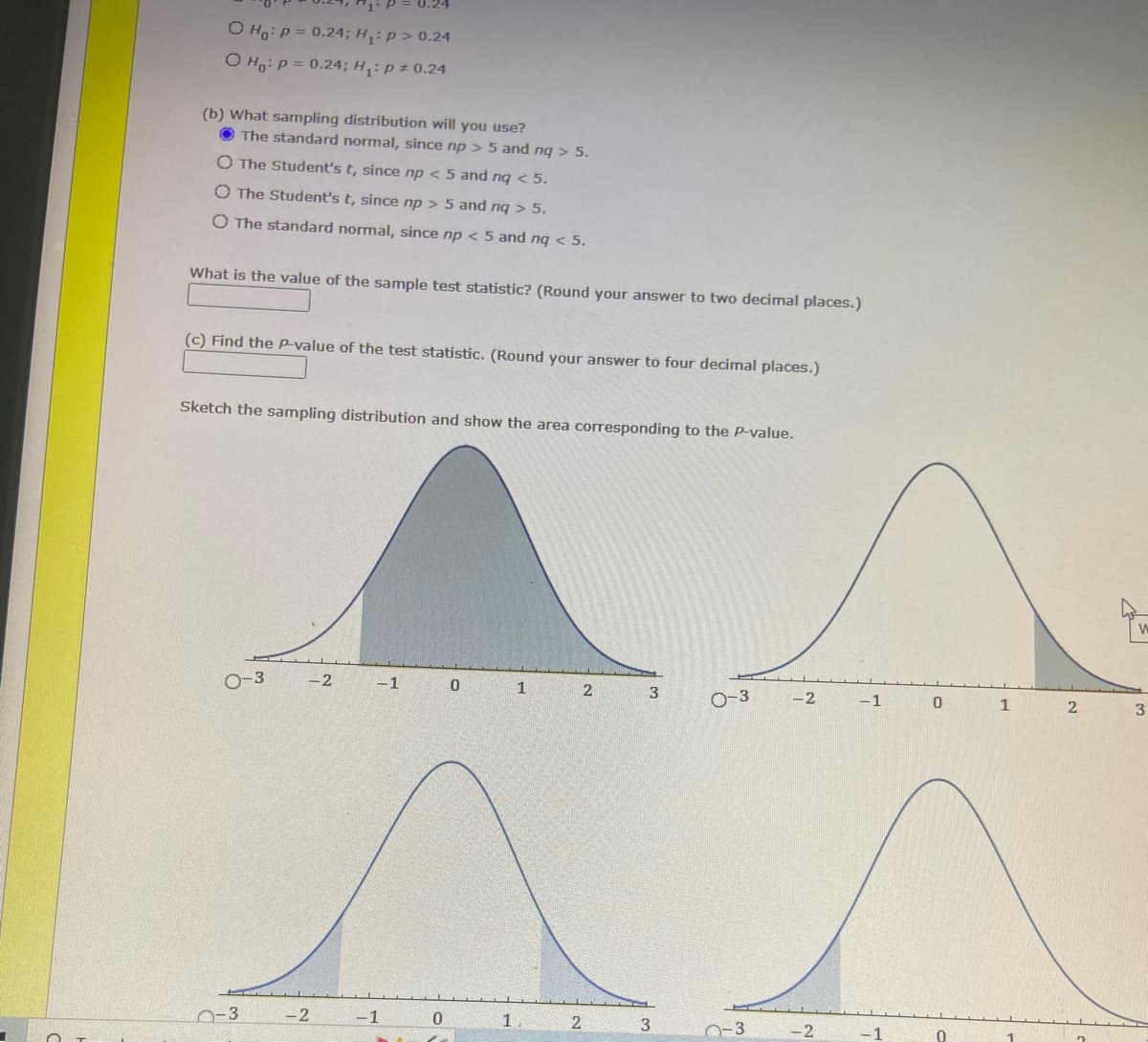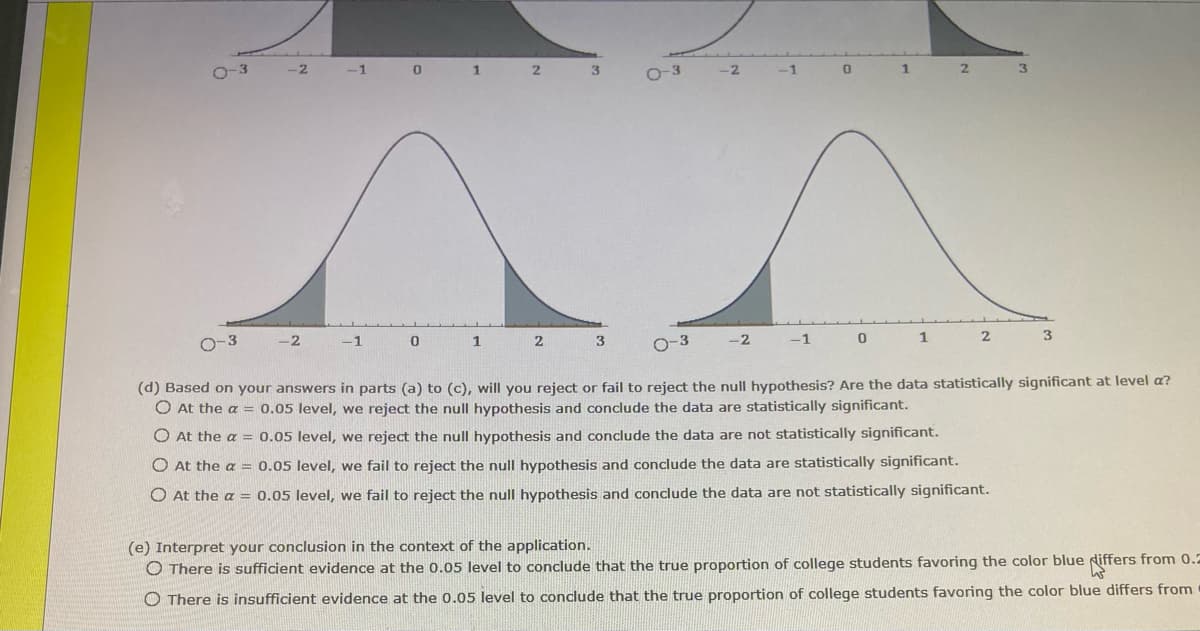What is your favorite color? A large survey of countries, including the United States, China, Russia, France, Turkey, Kenya, and others, indicated that most people prefer the color blue. In fact, about 24% of the population claim blue as their favorite color.† Suppose a random sample of n= 52 college students were surveyed and r= 8of them said that blue is their favorite color. Does this information imply that the color preference of all college students is different (either way) from that of the general population? Use? =0.05.
What is your favorite color? A large survey of countries, including the United States, China, Russia, France, Turkey, Kenya, and others, indicated that most people prefer the color blue. In fact, about 24% of the population claim blue as their favorite color.† Suppose a random sample of n= 52 college students were surveyed and r= 8of them said that blue is their favorite color. Does this information imply that the color preference of all college students is different (either way) from that of the general population? Use? =0.05.
Glencoe Algebra 1, Student Edition, 9780079039897, 0079039898, 2018
18th Edition
ISBN:9780079039897
Author:Carter
Publisher:Carter
Chapter10: Statistics
Section10.4: Distributions Of Data
Problem 19PFA
Related questions
Question
What is your favorite color? A large survey of
countries, including the United States, China,
Russia, France, Turkey, Kenya, and others,
indicated that most people prefer the color blue. In
fact, about 24% of the population claim blue as
their favorite color.† Suppose a random sample of
n= 52 college students were surveyed and r= 8of
them said that blue is their favorite color. Does this
information imply that the color preference of all
college students is different (either way) from that
of the general population? Use? =0.05.

Transcribed Image Text:O Ho: P = 0.24; H₁: p > 0.24
O Ho: P = 0.24; H₁: p = 0.24
(b) What sampling distribution will you use?
The standard normal, since np > 5 and nq > 5.
O The Student's t, since np < 5 and nq < 5.
O The Student's t, since np > 5 and nq > 5.
O The standard normal, since np < 5 and nq < 5.
What is the value of the sample test statistic? (Round your answer to two decimal places.)
(c) Find the P-value of the test statistic. (Round your answer to four decimal places.)
Sketch the sampling distribution and show the area corresponding to the P-value.
0-3 -2
0-3
-2
-1
-1
0
0
1
1
2
2
3
3
0-3 -2
0-3
-2
-1
-1
0
0
1
2
3

Transcribed Image Text:0-3
-3
-2
-2
-1
-1
0
0
1 2
1
2
3
0-3
-2
-2
-1
0
0
1
2
2
3
At the a = 0.05 level, we fail to reject the null hypothesis and conclude the data are statistically significant.
O At the a = 0.05 level, we fail to reject the null hypothesis and conclude the data are not statistically significant.
3
0-3
(d) Based on your answers in parts (a) to (c), will you reject or fail to reject the null hypothesis? Are the data statistically significant at level a?
O At the a = 0.05 level, we reject the null hypothesis and conclude the data are statistically significant.
O At the a = 0.05 level, we reject the null hypothesis and conclude the data are not statistically significant.
(e) Interpret your conclusion in the context of the application.
O There is sufficient evidence at the 0.05 level to conclude that the true proportion of college students favoring the color blue differs from 0.2
O There is insufficient evidence at the 0.05 level to conclude that the true proportion of college students favoring the color blue differs from
Expert Solution
This question has been solved!
Explore an expertly crafted, step-by-step solution for a thorough understanding of key concepts.
Step by step
Solved in 5 steps

Recommended textbooks for you

Glencoe Algebra 1, Student Edition, 9780079039897…
Algebra
ISBN:
9780079039897
Author:
Carter
Publisher:
McGraw Hill

Glencoe Algebra 1, Student Edition, 9780079039897…
Algebra
ISBN:
9780079039897
Author:
Carter
Publisher:
McGraw Hill